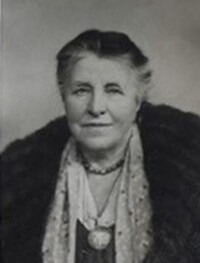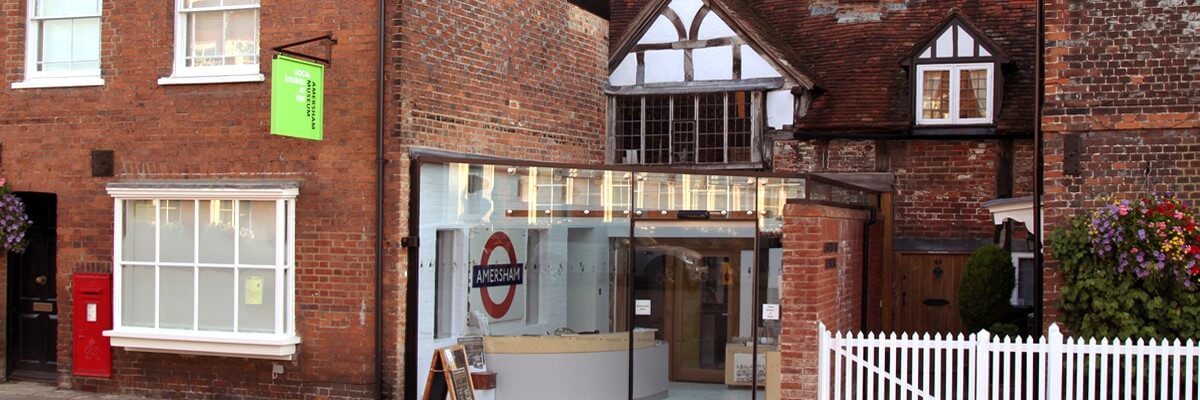Campaigner for peace and social reform
By Alison Bailey

100 years ago, in the aftermath of WWI, the 1919 Paris Peace conference formed the League of Nations, an international body to endeavour to maintain world peace. A Women’s Charter was presented at the Conference which demanded that a woman’s nationality be declared independent of her husband, that the League ban the trafficking of women and girls, and that women be afforded the same labour rights as men. Edith Bigland (1862-1951) who lived at Stone Dean, in Jordans, was at the forefront of this campaign. She established local groups to support the League of Nations and worked throughout her life for the advancement of women.
Edith Mary Hanbury Aggs
Edith Mary Hanbury Aggs was born on November 10, 1862 in Stamford Hill, London the eldest of three children to Thomas and Anna Aggs (née Hanbury) who were both Quakers. Thomas Aggs was a wealthy financier in Fenchurch Street in the City of London and the family prospered, moving to a large house, Hollywood on Clapham Common. They also had a country house at Dorking. Before her marriage, Edith worked as the manager of Oldridge Road School in Balham, London.
On June 28 1892, at the age of 29, she married successful artist, Percy Bigland, whose portraits of public figures such as Prime Minister Gladstone brought him wealth and fame. The marriage took place at the Friends Meeting House in Charing Cross “in the presence of about 400 ladies and gentlemen, nearly all of them members of the Society of Friends. The bride’s dress was a magnificent robe of silk brocade, trimmed with Brussels old lace, the gift of her mother. The orange blossoms she wore came from the garden of Mr Bigland at La Mortola”. This garden was near Ventimiglia in Italy, and was created by Thomas Hanbury in 1867. It was once described as the finest private garden in the world. The couple initially lived in Chelsea London and had two children, Ranulf and GriseldaThe Biglands purchased a large country estate, Stone Dean, close to the Quaker Meeting House at Jordans where they were active members. They became very involved with the community there and later became members of Louise Jopling’s Add Link Chiltern Club of Arts, having known Louise in Chelsea. In 1914 Percy Bigland painted his friend, Henrietta Busk Add Link.
Mrs Percy Bigland
Mrs Percy Bigland, as she was known, was a prolific public speaker. she campaigned tirelessly for social reform and often for causes that were deeply unpopular at the time. Inspired by Victorian social reformer, Josephine Butler, she campaigned against prostitution and the trafficking of women and children. The need for women police was another controversial cause she championed throughout her life.
A regular speaker for the National Council of Women, Edith often shared a platform with leading suffragists, like Eleanor Rathbone Eleanor Rathbone – Wikipedia and Maude Royden Maude Royden – Wikipedia. Edith was constantly mentioned in the press lecturing on subjects such as The White Slave Trade, The Life of Josephine Butler, The Co-education of Boys and Girls and The Social and Humanitarian Work of the League of Nations. She was an active member and on the executive council of many suffrage societies. These included the London Society for Women’s Suffrage (which became the Fawcett Society in 1953), the Friends League for Women’s Suffrage, the Women’s Municipal Party and the Free Church League for Women’s Suffrage. She was in the gallery of the House of Commons when the battle was finally won.
Pacifism
The Biglands were pacifists during WWI, which was deeply unpopular. Their son, Ranulf was also a pacifist and served in France and Belgium as an ambulance driver for the Friends Ambulance Unit. The Biglands visited conscientious objectors in prison throughout the war and campaigned for penal reform. As anti-war campaigners they would have been placed under official surveillance. Edith was active in the international suffrage movement and was one of 180 high profile women, nicknamed ‘cranquettes’ by the press, who was prevented from travelling to The Hague in 1915 for the Women’s International Peace Congress.
After her husband’s death in 1926, she continued as a passionate supporter of the League of Nations, often lecturing on its social and humanitarian work and attending League of Nations’ conferences in Geneva. She continued speaking and campaigning until her death at Stone Dean in 1951. The League of Nations was the forerunner of the current United Nations, which was founded in 1945 as the league had failed to prevent a 2nd world war.

